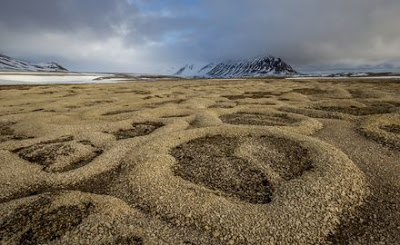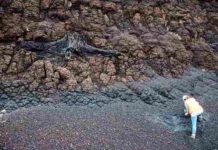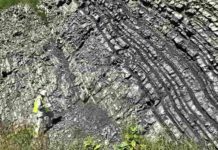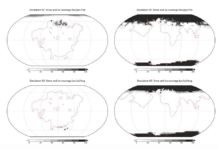
Humanity has become a geological force that is able to suppress the beginning of the next ice age, a study now published in the scientific journal Nature shows. Cracking the code of glacial inception, scientists of the Potsdam Institute for Climate Impact Research found the relation of insolation and CO2 concentration in the atmosphere to be the key criterion to explain the last eight glacial cycles in Earth history. At the same time their results illustrate that even moderate human interference with the planet’s natural carbon balance might postpone the next glacial inception by 100,000 years.
“Even without human-made climate change we would expect the beginning of a new ice age no earlier than in 50,000 years from now — which makes the Holocene as the present geological epoch an unusually long period in between ice ages,” explains lead author Andrey Ganopolski. “However, our study also shows that relatively moderate additional anthropogenic CO2-emissions from burning oil, coal and gas are already sufficient to postpone the next ice age for another 50.000 years. The bottom line is that we are basically skipping a whole glacial cycle, which is unprecedented. It is mind-boggling that humankind is able to interfere with a mechanism that shaped the world as we know it.”
For the first time, research can explain the onset of the past eight ice ages by quantifying several key factors that preceded the formation of each glacial cycle. “Our results indicate a unique functional relationship between summer insolation and atmospheric CO2 for the beginning of a large-scale ice-sheet growth which does not only explain the past, but also enables us to anticipate future periods when glacial inception might occur again,” Ganopolski says.
Humanity as a geological force
Using an elaborate Earth system model simulating atmosphere, ocean, ice sheets and global carbon cycle at the same time, the scientists analyzed the effects of further human-made CO2-emissions on the ice volume on the Northern Hemisphere. “Due to the extremely long life-time of anthropogenic CO2 in the atmosphere, past and future emissions have a significant impact on the timing of the next glacial inception,” co-author Ricarda Winkelmann says. “Our analysis shows that even small additional carbon emissions will most likely affect the evolution of the Northern Hemisphere ice sheets over tens of thousands of years, and moderate future anthropogenic CO2-emissions of 1000 to 1500 Gigatons of Carbon are bound to postpone the next ice age by at least 100,000 years.”
The quest for the drivers of glacial cycles remains one of the most fascinating questions of Earth system analysis and especially paleoclimatology, the study of climate changes throughout the entire history of our planet. Usually, the beginning of a new ice age is marked by periods of very low solar radiation in the summer, like at current times. However, at present there is no evidence for the beginning of a new ice age: “This is the motivation for our study. Unravelling the mystery of the mechanisms driving past glacial cycles also facilitates our ability to predict the next glacial inception,” Winkelmann says.
“Like no other force on the planet, ice ages have shaped the global environment and thereby determined the development of human civilization. For instance, we owe our fertile soil to the last ice age that also carved out today’s landscapes, leaving glaciers and rivers behind, forming fjords, moraines and lakes. However, today it is humankind with its emissions from burning fossil fuels that determines the future development of the planet,” co-author and PIK-Director Hans Joachim Schellnhuber says. “This illustrates very clearly that we have long entered a new era, and that in the Anthropocene humanity itself has become a geological force. In fact, an epoch could be ushered in which might be dubbed the Deglacial.”
Reference:
A. Ganopolski, R. Winkelmann, H. J. Schellnhuber. Critical insolation–CO2 relation for diagnosing past and future glacial inception. Nature, 2016; 529 (7585): 200 DOI: 10.1038/nature16494
Note: The above post is reprinted from materials provided by Potsdam Institute for Climate Impact Research (PIK).










